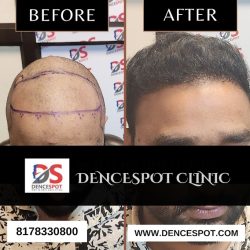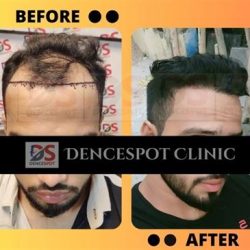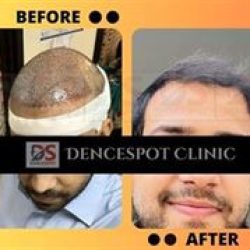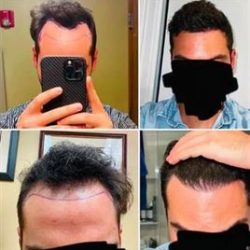Best Skin Treatment
The best skin treatment encompasses a holistic approach to skincare, tailored to individual needs and concerns. It begins with a thorough assessment by a certified dermatologist or skincare professional, who can identify specific issues like acne, aging, pigmentation irregularities, or dryness. Customization is key, ensuring that treatments are uniquely suited to one’s skin type and goals. Effective treatments may include regular cleansing and moisturizing routines, chemical peels to exfoliate and rejuvenate, microdermabrasion for improved texture and tone, and laser therapy to address wrinkles, scars, and pigmentation. Micro needling stimulates collagen production and can improve skin texture and acne scars.
For anti-aging, Botox and dermal fillers can reduce wrinkles and add volume. High-quality skincare products with active ingredients such as retinoids and antioxidants complement professional treatments and support ongoing skin health. Regular maintenance, sun protection, and follow-up appointments are essential for long-lasting results. The best skin treatment combines professional expertise, tailored procedures, and consistent at-home care to achieve and maintain healthy, radiant skin.
What Determines Our Skin Color?
Dark to light browns are the range of human skin tones. Our inherited characteristics and sun exposure influence the color of our skin.
Can a Dark Skin Tone Ever Become Fair?
Dermatologists and plastic surgeons from all over the world caution patients against believing any therapies that guarantee a significant change in skin tone. That cannot be accomplished medically. Skin tone and texture are impacted by a number of skin issues, but when these issues are treated by a competent dermatologist, the skin is regenerated, giving it a more even tone and better overall appearance.
Safe And Permanent Skin Lightening Treatments
Why Is “Trying To Become Fair” So Controversial?
The desire to “become fair” or achieve lighter skin tone is a contentious issue in the context of cosmetic procedures offered by clinics for several reasons. Firstly, it often reinforces harmful societal beauty standards that prioritize fair skin, perpetuating colorism and marginalizing individuals with darker skin tones. Clinics offering skin lightening treatments can inadvertently contribute to this discrimination.
Secondly, these treatments may promote unrealistic beauty ideals, which can have detrimental effects on the self-esteem and mental health of individuals who feel pressured to conform to these standards. The pursuit of fairness can lead to a sense of inadequacy and a distorted sense of self-worth based on physical appearance.
Additionally, many skin-lightening products and procedures may contain potentially harmful ingredients or have side effects, raising concerns about the safety and long-term health implications of these treatments.
Clinics should be sensitive to these issues, prioritize the well-being of their clients, and offer a range of cosmetic treatments that promote diversity and self-acceptance rather than perpetuating harmful beauty norms.
How To Reduce Excessive Melanin In Skin Permanently?
The Potential Side Effects Of Instant Fairness Solutions:
Instant skin fairness solutions are avoidable as they may cause the following side effects:
- Thinning of the skin
- Discoloration of the face
- Increased visibility of the capillaries
- Severe acne
- Hypersensitivity to sunlight
- Rebound paradoxical pigmentation
- Unwanted facial hair growth
- Skin allergy
Now, that you are aware of the reasons to stay away from experimenting with instant fairness:
Dermabrasion is an exfoliating technique that uses a rotating instrument to remove the outer layers of skin, usually on the face. This treatment is popular with people who wish to improve the appearance of their skin. Some of the conditions it can treat include fine lines, sun damage, acne scars, and uneven texture.
With dermabrasion, a dermatologist or plastic surgeon “sands” your skin with a special instrument. The procedure makes way for a new, smoother layer of skin to replace the skin that’s been treated.
When Is Dermabrasion or Microdermabrasion Used?
Dermabrasion and microdermabrasion are cosmetic procedures used to improve the texture and appearance of the skin, but they are applied in different situations:
Dermabrasion:
- Skin Irregularities: Dermabrasion is typically used for more severe skin irregularities, such as deep acne scars, surgical scars, or scars from accidents or injuries.
- Wrinkles and Fine Lines: It can effectively reduce the appearance of deep wrinkles and fine lines, especially around the mouth.
- Sun Damage: Dermabrasion can also address sun-damaged skin, particularly in cases of extensive photodamage.
- Uneven Pigmentation: It can help with issues like uneven skin tone and pigmentation irregularities.
- Precancerous Skin Growth: Dermabrasion may be used to treat precancerous skin growths called actinic keratoses.
Microdermabrasion:
- Mild Skin Concerns: Microdermabrasion is a gentler procedure suitable for milder skin concerns. It is often used for general skin rejuvenation.
- Exfoliation: It is effective in exfoliating the outer layer of the skin, removing dead skin cells, and promoting collagen production.
- Acne and Blackheads: Microdermabrasion can help improve mild acne, blackheads, and clogged pores.
- Skin Brightening: It can give the skin a smoother, brighter, and more youthful appearance.
- Stretch Marks and Superficial Scars: While it may not completely eliminate deep scars, microdermabrasion can improve the texture of superficial scars and stretch marks.
The choice between dermabrasion and microdermabrasion depends on the severity of skin issues, recovery time, and the desired outcome. Dermabrasion is more aggressive and may require a longer recovery period, while microdermabrasion is a less invasive, quick procedure with minimal downtime. A consultation with a dermatologist or skincare professional can help determine which option is best suited for individual skin concerns.
How Does Dermabrasion and Microdermabrasion Work?
Dermabrasion and microdermabrasion are skin resurfacing techniques that work by exfoliating the outermost layer of the skin, known as the epidermis, to improve its texture and appearance.
Dermabrasion: In this more aggressive procedure, a rotating device with a wire brush or diamond wheel is used to remove the top layers of skin, including damaged or scarred tissue. The process essentially “sands” the skin, stimulating the production of new, smoother skin cells. Dermabrasion is typically used for more significant skin issues like deep scars, wrinkles, and sun damage.
Microdermabrasion: Microdermabrasion, on the other hand, is a milder and less invasive technique. It employs a handheld device that emits fine abrasive particles or uses a diamond-tipped wand to gently exfoliate the skin’s surface. This process removes dead skin cells, unclogs pores, and promotes collagen production, resulting in a smoother, refreshed complexion. Microdermabrasion is suitable for mild skin concerns and serves as a popular choice for general skin rejuvenation.
Both procedures stimulate the skin’s natural healing process, leading to improved skin tone, reduced blemishes, and a more youthful appearance, but they differ in their intensity and the types of skin issues they address.
Are There Side Effects and Complications With Dermabrasion and Microdermabrasion?
Dermabrasion side effects include:
- Uneven changes in skin color.
- Formation of a scar
- Swelling
- Infection
Microdermabrasion side effects include:
- Irritation from crystals getting into unprotected eyes.
- Care After Dermabrasion and Microdermabrasion.
- You will have a follow-up appointment soon after your dermabrasion.
- Do not drink alcohol for 48 hours after the procedure.
- Do not take aspirin or any products that contain aspirin or ibuprofen for one week afterwards.
- Don’t smoke.
- Avoid sun exposure as best you can for three to six months.
- Use moisturizers and sunscreens.
- Avoid sun exposure for a few days immediate.







